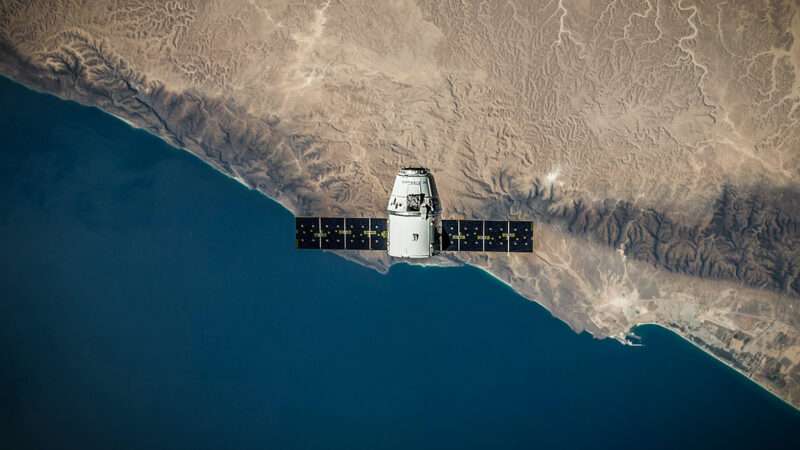
There are a number of companies and government entities responsible for the satellites currently in orbit.
State operators
State operators are government entities that operate satellite networks for everything from weather to navigation to military uses.
The federal Landsat program is a series of observational satellites. The program produces a massive amount of mappable data for both public and private use: Search giant Alphabet uses Landsat data for its Google Earth and Google Maps programs.
In fact, all GPS-enabled devices use government satellites: The original Global Positioning System was a military program that was opened up to civilian use in the 1980s.
Geostationary satellites
Geostationary satellites orbit the Earth at the same speed the planet rotates. They tend to be used by larger companies with small fleets of expensive satellites.
DirecTV maintains a fleet of over a dozen satellites suspended over 22,000 miles from the Earth. The greater distance gives each satellite tremendous coverage area.
Dish Network, the other major player in the direct broadcast television space, operated 11 satellites as of 2021, but analysts worry that most of the fleet is nearing the end of its shelf life.
Viasat operates five satellites, covering home internet, in-flight Wi-Fi, and military applications, with annual revenues of $2.8 billion.
Intelsat, which began life as a government entity in the 1960s, also provides in-flight entertainment and connectivity for maritime vessels and other infrastructure, but recently emerged from bankruptcy protection.
Non-geostationary satellites
Non-geostationary satellites orbit at a different rate than Earth. They are typically used by smaller companies with large fleets of mass-produced satellites.
The largest player in the satellite space falls into this category: Starlink, owned by SpaceX. The company offers broadband-speed internet to hundreds of thousands of subscribers worldwide. As of August 2022, the company had 3,000 satellites in orbit, and it plans to accelerate its launch rate when its super heavy-lift system Starship enters operation. The Federal Communications Commission says it cannot have more than 12,000 in operation, but the company hopes to raise the cap to 42,000.
The company most equipped to eat into Starlink's market share is Amazon. As part of what it's calling Project Kuiper, the e-commerce giant will spend $10 billion to launch more than 3,200 broadband satellites over the next decade.
Earth-observation satellites
Earth-observation satellites are used in small fleets for anything from observing weather and traffic patterns to spying.
Maxar Technologies has more than 80 satellites currently in orbit. Apple previously used Maxar data for Apple Maps.
In January 2021, Capella Space launched two satellites using synthetic aperture radar, which provides 24-hour all-weather Earth observation, collecting topographical data all over the world, multiple times per day.
The post Who Owns the Satellites Orbiting the Earth? appeared first on Reason.com.







